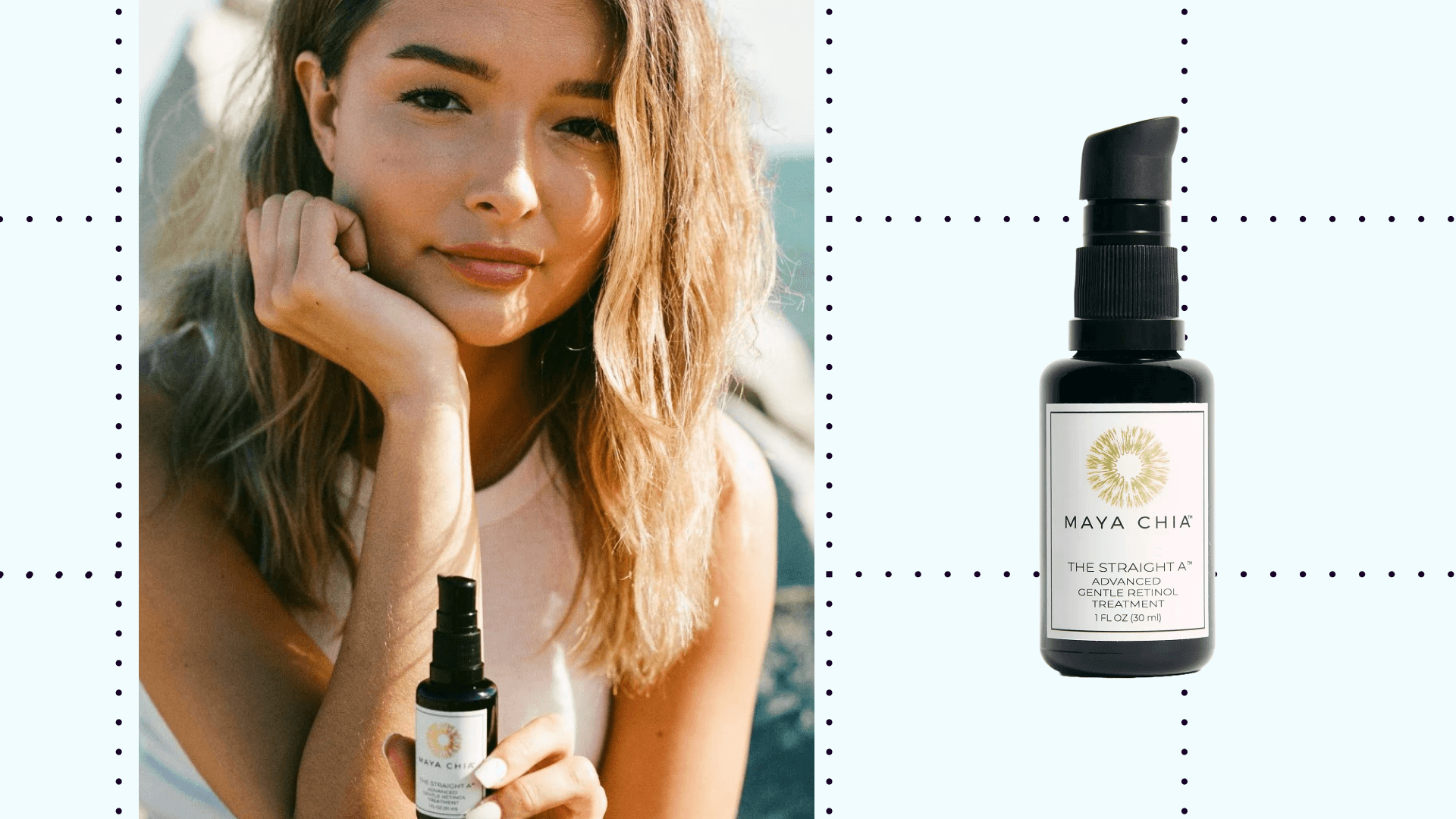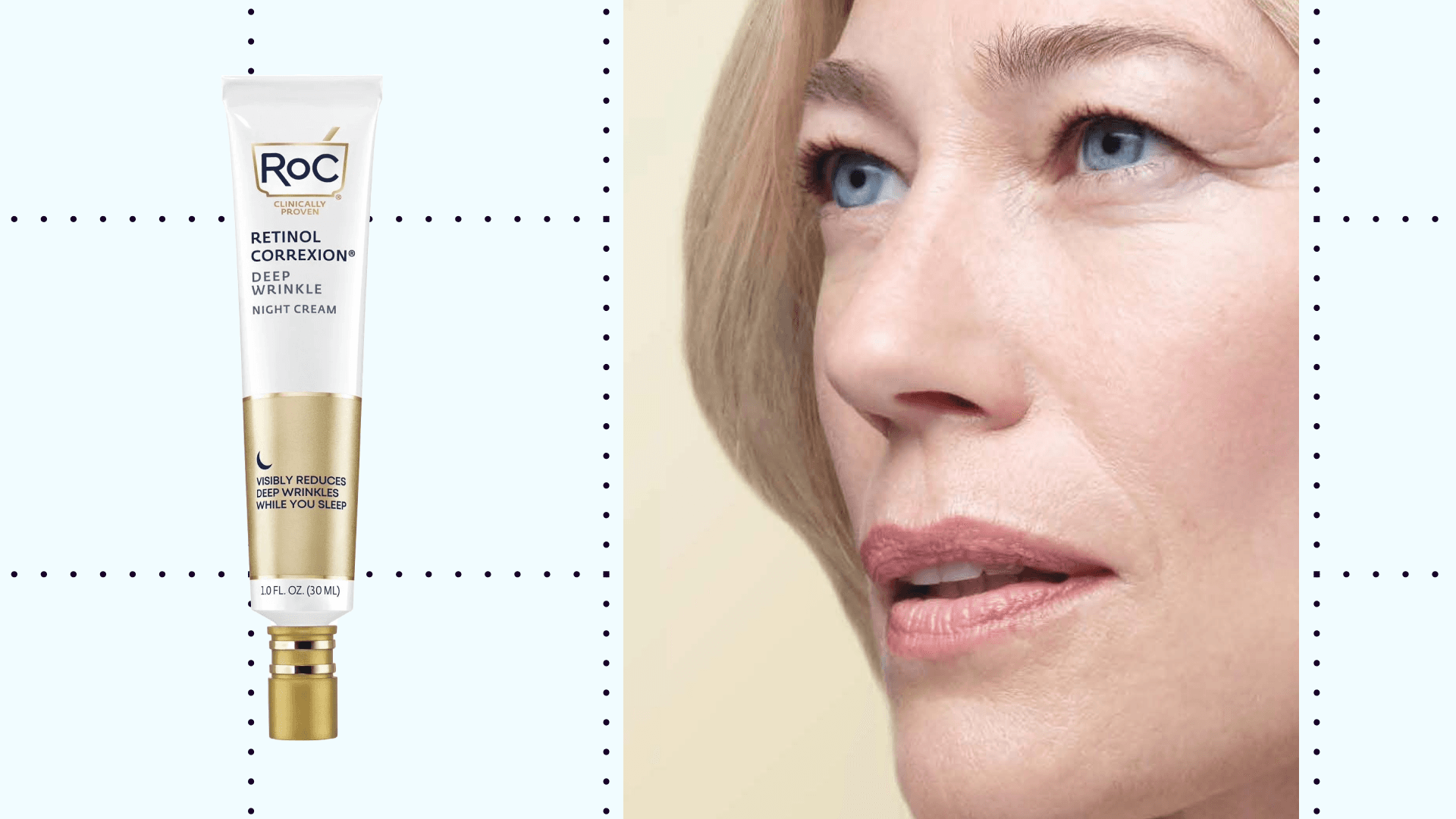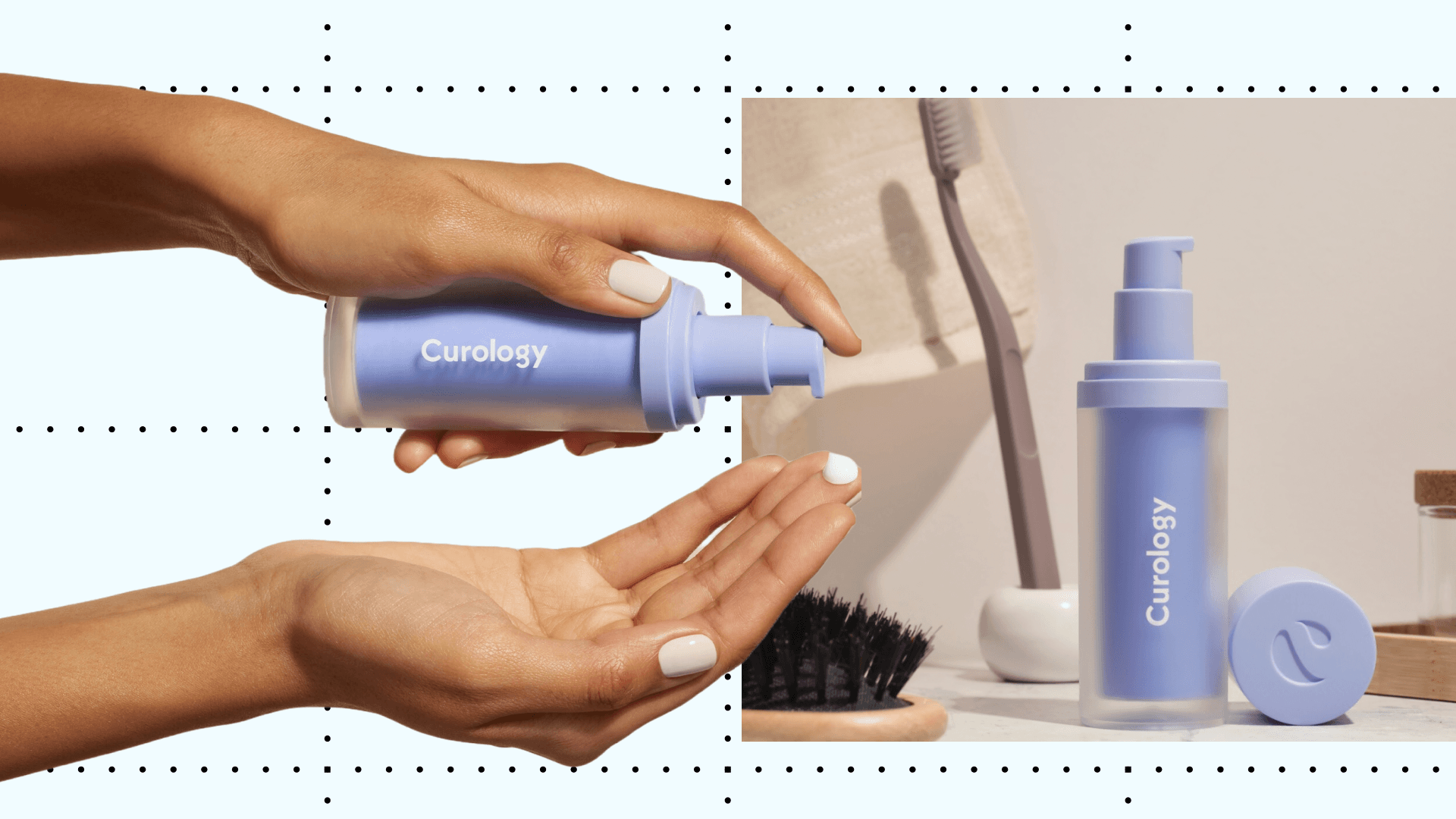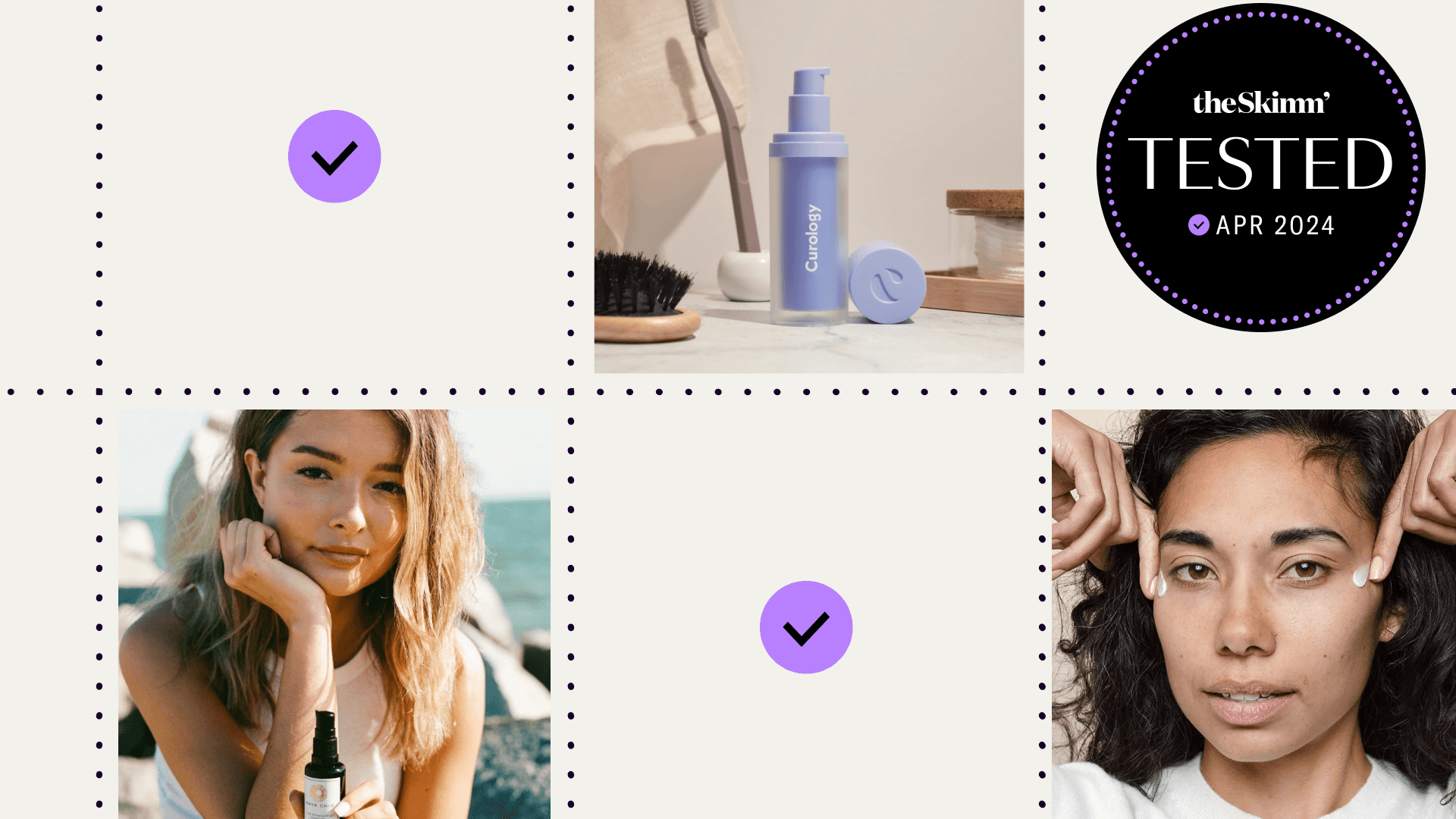Products you buy through our links may earn us a commission. Oh, and if something's out of stock, oops, it was there (and all prices were accurate) at time of publication.
Welcome to Skimm Tested, where we put products to the test and then give them a report card. (Check out all of our tried-and-tested faves here.)
The assignment…
As a newly-minted 30-year-old with sensitive, rosacea-prone skin — and a retinol beginner — I set out to find a retinol that my skin could tolerate without causing too much irritation. I consulted two dermatologists for product recommendations, and overall advice on how to best use retinol on my reactive skin — Hadley King, MD, a board-certified dermatologist in New York; and board-certified dermatologist Ava Shamban, MD, who founded Althaea Skin and is based in California.
What I tested…
Maya Chia The Straight A Advanced Gentle Retinol Treatment: A retinol serum that’s also packed with bakuchiol, vitamin C, and vitamin E. ($125, Maya Chia)
RoC Retinol Correxion Deep Wrinkle Anti-Aging Night Cream: A drugstore retinol night cream with glycerin to hydrate and glycolic acid to exfoliate. ($21.97, Walmart)
Tretinoin prescription: Aka retinoic acid, which is the strongest form of retinol available. It comes in different percentages — I started with .025, the lowest — and you can get it through your dermatologist or online. ($5+, Curology)
Maya Chia The Straight A Advanced Gentle Retinol Treatment ($125)

Straight A's in…
Gentleness. Dr. King recommended this serum because it contains ingredients to support the skin barrier and bakuchiol, which she says, “seems to be activating the genes that regulate collagen and elastin production — the same ones retinol activates. And it doesn't seem to irritate and redden skin the way retinol often does.” I didn’t expect to hit it out of the park right away, but my skin fell in love with this serum almost instantly. I applied it the first night and braced for impact — the fear of tightness, irritation, and purging that’s prevented me from starting retinol before now — but the next morning, my skin was in no such pain. There was even a slight glow to it. As I worked up to twice a week, not once did this make me peel. And though there were times my skin felt a little more taut than normal, I never experienced a rosacea flare-up. I liked it so much I was reluctant to move on to the other two products I still had to test.
Vitamin C. I think the vitamin C in this makes a huge difference in how glowy my skin looked. I’ve tried several vitamin C serums that all broke me out, but my skin was somehow able to tolerate it when combined in this magic cocktail. It also looks and feels like a vitamin C serum, meaning it soaks in really quickly. The day after my second application, the girl who works at my smoothie place (who is likely 10 years younger than me) told me my skin was glowing, and if that doesn’t prove it’s working, then I don’t know what does.
Scent. Some retinol products do not smell great, so I didn’t expect this to smell so…good. The scent is like green tea and made me feel like I was in a spa while patting it into my skin. It's free of synthetic fragrance, so the pleasant smell is due to the botanicals in here (some of which are organic).
Room for growth…
Experience level. Since it seems to me to be incredibly gentle, if you have been using retinol since you were 20 years old, kudos, and you probably won’t see any skin-altering effects. This is great for beginners, the retinol-averse, and sensitive skin soldiers like me. If your skin is already accustomed to stronger versions, this might work more like a vitamin C serum for you.
Price. I’m not thrilled at the prospect of finding a new holy grail that adds up to approximately 18 iced lattes, but when you consider that it’s really two serums in one, I think the price is worth it.
RoC Retinol Correxion Deep Wrinkle Anti-Aging Night Cream ($21.97)

Straight A's in…
Texture. I love that this is specifically a “night cream,” like the one you watched your mom apply before bed. It’s really thick — since it’s made with shea butter and squalane — so it feels like it’s moisturizing while it promotes cell turnover while you sleep.
Price. You just can’t beat the price of a drugstore product. Full stop.
Room for growth…
Glycolic acid. After using this product once, I woke up with dry, peeling skin, especially in my under-eye area, which is a telltale sign for me that a product is too strong. After further analyzing the ingredient list, I discovered my old nemesis glycolic acid, which my skin typically does not tolerate well. For my sensitive skin, a product that has both retinol and a chemical exfoliant is way too strong. But if you have normal skin that’s already used to glycolic acid, that might be a benefit for you.
Fragrance. If this reminded me of an old-fashioned night cream, it certainly smelled like one. It’s overly perfume-y, so I would caution against using it if fragrance causes irritation for you. Dr. Shamban also recommended Neutrogena Rapid Wrinkle Repair, which is fragrance-free, doesn’t contain any exfoliating acids, and would likely be a better option for my skin.
Tretinoin ($5+)

Straight A's in...
Effectiveness. There’s a reason why tretinoin is the gold standard. As Dr. King explains, “Retinoic acid, or tretinoin, is the retinoid form that can be used by the skin, making it the most potent … The other retinoids that are found commonly in over-the-counter products are retinyl palmitate, retinol and retinaldehyde (‘retinal’). These have to undergo a conversion process in order to turn into retinoic acid before the skin can use them.” In other words, tretinoin is the purest form of retinol you can get. Tretinoin and I started off with a fraught relationship before I tried the sandwiching method — aka applying moisturizer, tret, then another layer of moisturizer to buffer the retinol’s irritating effects. But right from the first application, I could see it working. My skin started flaking in places, but it also completely smoothed and lightened an acne scar that had been there for years in just a few applications.
Single ingredient. Often with my skin, the fewer ingredients in a product, the better, so I felt confident knowing there wasn’t much mixed in with the tretinoin. Though if you get a prescription online from Curology, you have the option to add other ingredients for a custom formula.
Room for growth…
Irritation. There was some irritation and tightness with using this product, like I knew there would be. But while I was terrified of the Big Bad Tret Wolf for so long, it wasn’t as bad as I thought it would be. My skin was flaky for a while, especially before I started sandwiching. A few pimples formed that I didn’t really know what to do with (acne patches are your best friend), but other than that it was worth sticking with it. I wouldn’t say my skin is fully adjusted yet, even a month in, but I’m starting to see the glass skin rainbow at the end of the road.
Retinol best practices, according to the derms…
According to Dr. Shamban, “always apply retinol at night, since this is when your skin's natural repair processes are most active due to its circadian rhythm.”
Anyone using retinol should be applying sunscreen daily. No exceptions. Dr. Shamban says you need to “further protect your skin by applying sunscreen during the day, as retinol can make your skin more susceptible to UV damage.”
Options with extra ingredients are not always better for sensitive skin, so be sure to read the label carefully before using.
Starting with the most potent formula is risky and your skin might suffer more up front, but the payoff is great once the adjustment period is over.
How I did my homework…
I tested three retinol products on my sensitive, rosacea-prone skin for at least three weeks each, applying them once the first week, and twice the following two weeks. I applied them at night, with the sandwiching method and without, and took note of how my skin looked and felt in the morning and over the next few days. I wore sunscreen religiously the entire time.
Footnotes…
Maya Chia The Straight A Advanced Gentle Retinol Treatment, $125 at Maya Chia, $125 at Free People
RoC Retinol Correxion Deep Wrinkle Anti-Aging Night Cream, $21.97 at Walmart, $34.42 in a set at Amazon
Tretinoin prescription, $5 at Curology
Live Smarter
Sign up for the Daily Skimm email newsletter. Delivered to your inbox every morning and prepares you for your day in minutes.




